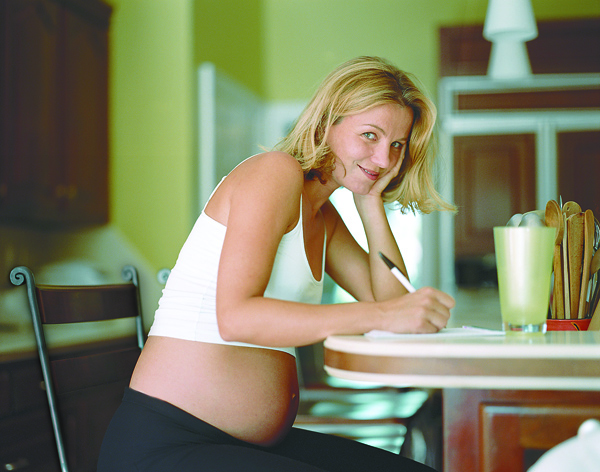Word of Mom | You: having a baby
Baby’s coming, get ready
Our short list of what’s crucial to have in place before your infant comes home – and why
Removing the disco ball from the spare bedroom isn’t the only thing you need to do before bringing baby home. Long before you deliver, it’s a good idea to prepare for baby’s arrival by readying his room (or area) and making sure that you have the key items you’ll need.
If baby will have his own room, ask your significant other to paint (using no-VOC paint) in advance so the room will be aired out fully by the time baby comes home. Expectant moms shouldn’t even help scrape off the old paint, as the risk of lead toxicity remains high for all homes built before 1976. While you’re at it, cover all outlets, check smoke alarms, and be sure to remove all cleaners and toxins from lower cabinets.
It’s a good idea to register at a baby store, because you’ll be getting lots of presents, and it’s far better to receive things you need in the colors you prefer than some “creative” gifts that are totally not to your taste, requiring you to schlep from store to store returning them after the baby is born. Aside from all that, there are a few other important items to have at the ready for when baby comes home; here’s our list.
Car Seat
By law, if you’re going to drive your baby home from the hospital, you’ll need a rear-facing infant car seat. Make sure you’ve read all the instructions and practiced installing it—approximately 80% of car seats are not installed properly. It actually can be quite difficult to get a snug fit, so have yours checked by a pro.
Most local fire stations will do it, but you can also find certified car-seat technicians in your area to help you. Visit the National Highway Traffic and Safety Administration website (www.nhtsa.gov) and while you’re there, check the list of car-seat recalls.
Crib
If you’ve decided that baby will be sleeping in a crib, you’ll need to buy a firm, tight-fitting mattress, so baby can’t get trapped between it and the crib and we prefer organic. Pick a fixed-rail, safety-certified crib that has no missing, loose, or broken screws or brackets.
If you get a used crib and are not sure if it meets current safety regulations, check jpma.org for the latest. Current standards call for no more than 2⅜” between crib slats, so baby’s head and body cannot fit through the slats. Corner posts should not extend more than 1⁄16″ above the end panels, so clothing can’t get caught. And no cutouts in the headboard or footboard, so baby’s head doesn’t get stuck.
Soft Goods
Babies have extremely sensitive skin! Wash all baby’s clothes, sheets, and towels before use. There’s no need to wash his things separately from your own if the whole family uses perfume- and dye-free detergent; otherwise, choose a super-mild formula for babies. Also avoid commercial fabric softeners and dryer sheets, as they contain harsh chemicals. If you must soften clothes, add either ¼ cup baking soda or ¼ cup white vinegar to the wash cycle. The vinegar will also take care of static cling.
Friends
Having a new baby can be isolating, so take steps to set up your support system before baby comes by finding friends in prenatal exercise classes, signing up for new-mom social events, and connecting with other expecting moms through your ob/gyn or local message boards. It’s important to pay attention to your emotional health, because up to 15% of women suffer postpartum depression (PPD) and many more go through a milder form called “the baby blues.”
The first step, of course, is recognizing that something doesn’t feel quite right for you. Some symptoms include changes in sleep and energy, significant anxiety, feelings of guilt, and not feeling bonded with your baby. You can also refer to an official depression scale to gauge whether you have the blues that will go away in a matter of weeks, or PPD, which requires treatment. Go to doctoroz.com or realage.com for the test.
And if you do suffer from postpartum depression, there are many different therapies, including medication. But one of the best treatments is the most simple—talking. Talk to your partner, other moms, friends, support groups, or a professional counselor. You can also contact Postpartum Support International (www.postpartum.net) or the National Women’s Health Information Center (www.4woman.gov) for more resources
Michael Roizen, M.D., is a professor of internal medicine and
of anesthesiology, chief wellness officer, and chair of The Cleveland Clinic Wellness Institute.
Mehmet Oz, M.D., is a professor, vice chairman of surgery, and director of the Cardiovascular Institute at New York-Presbyterian Hospital/Columbia University Medical Center. Check your local listings for The Dr. Oz Show!
